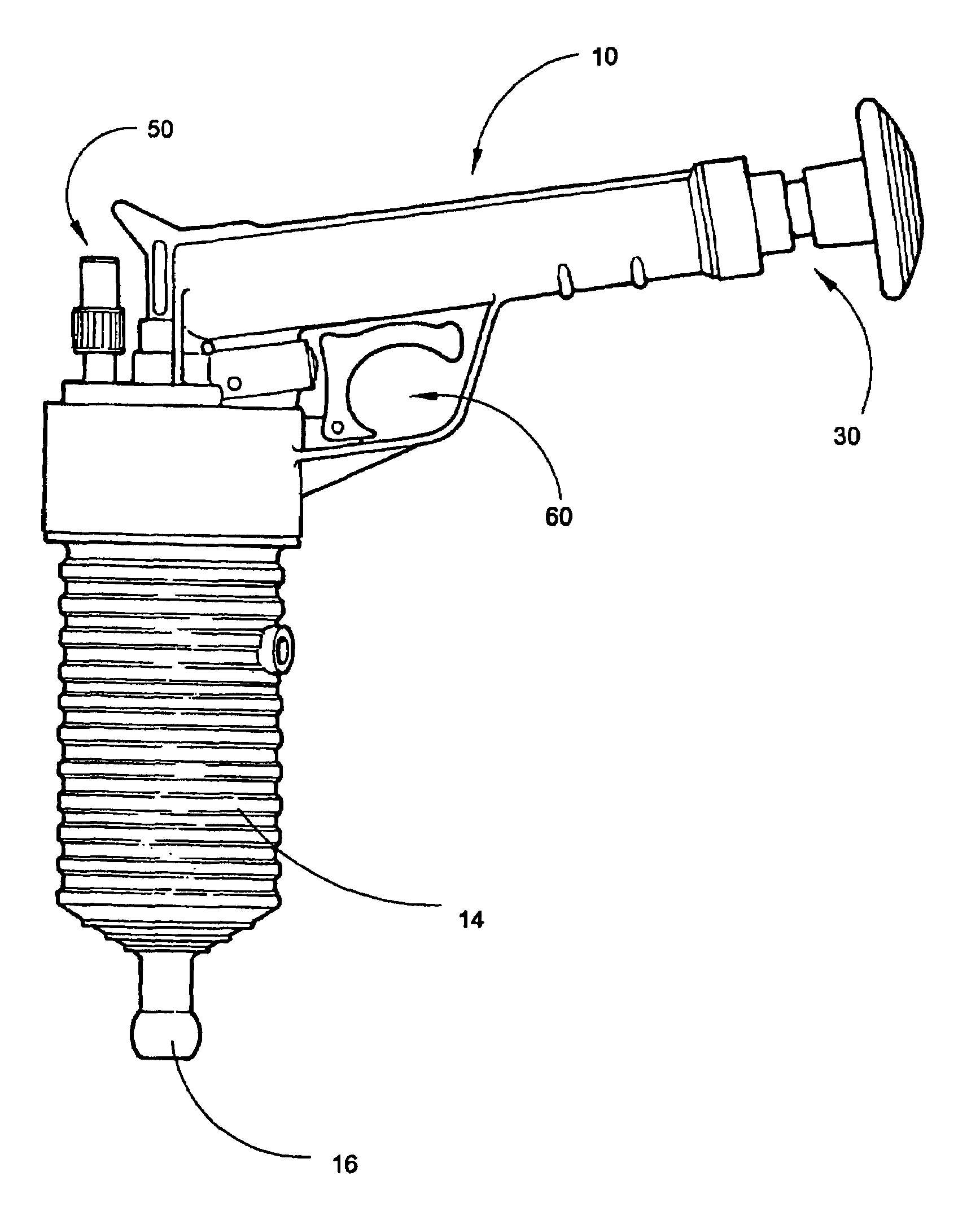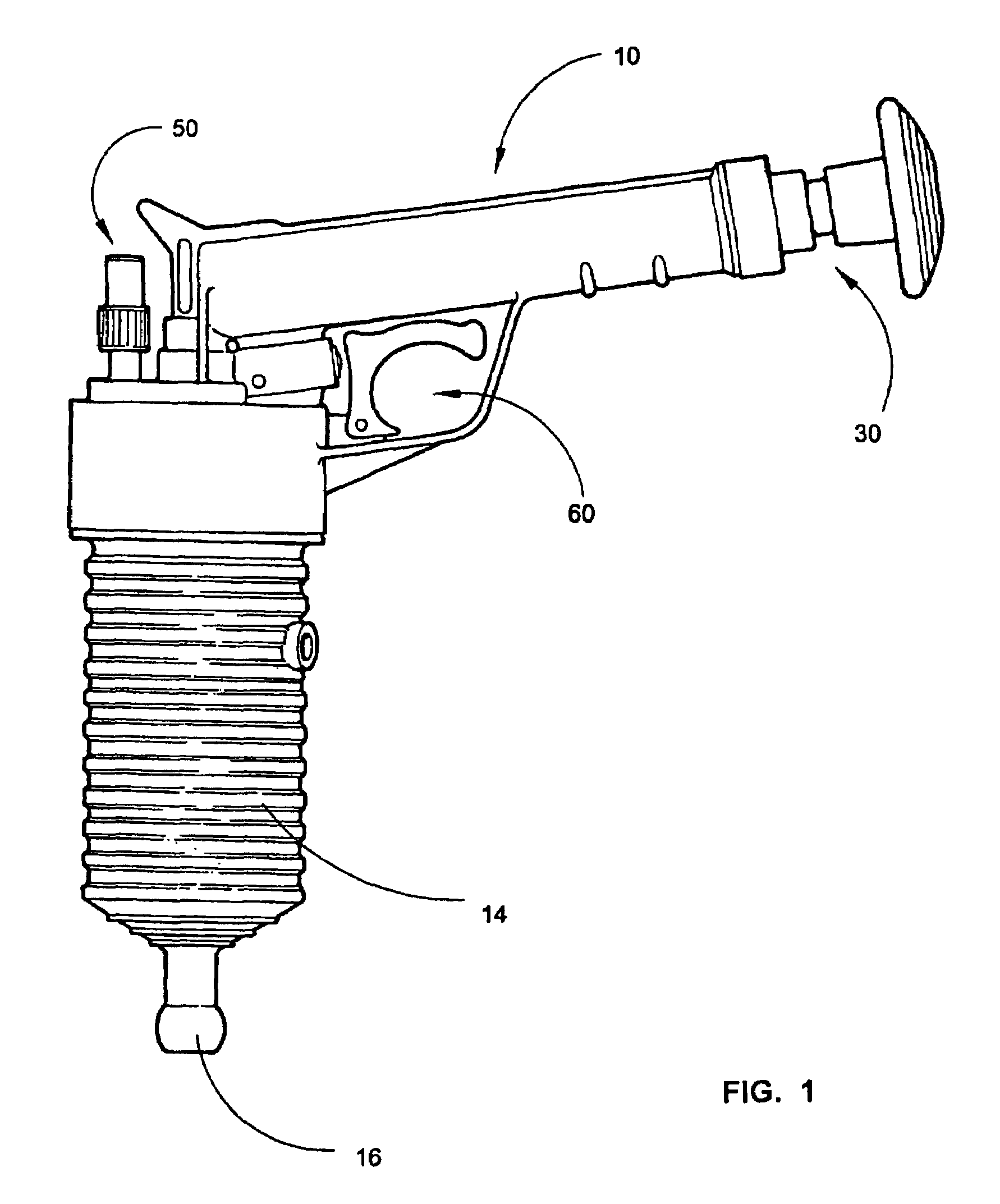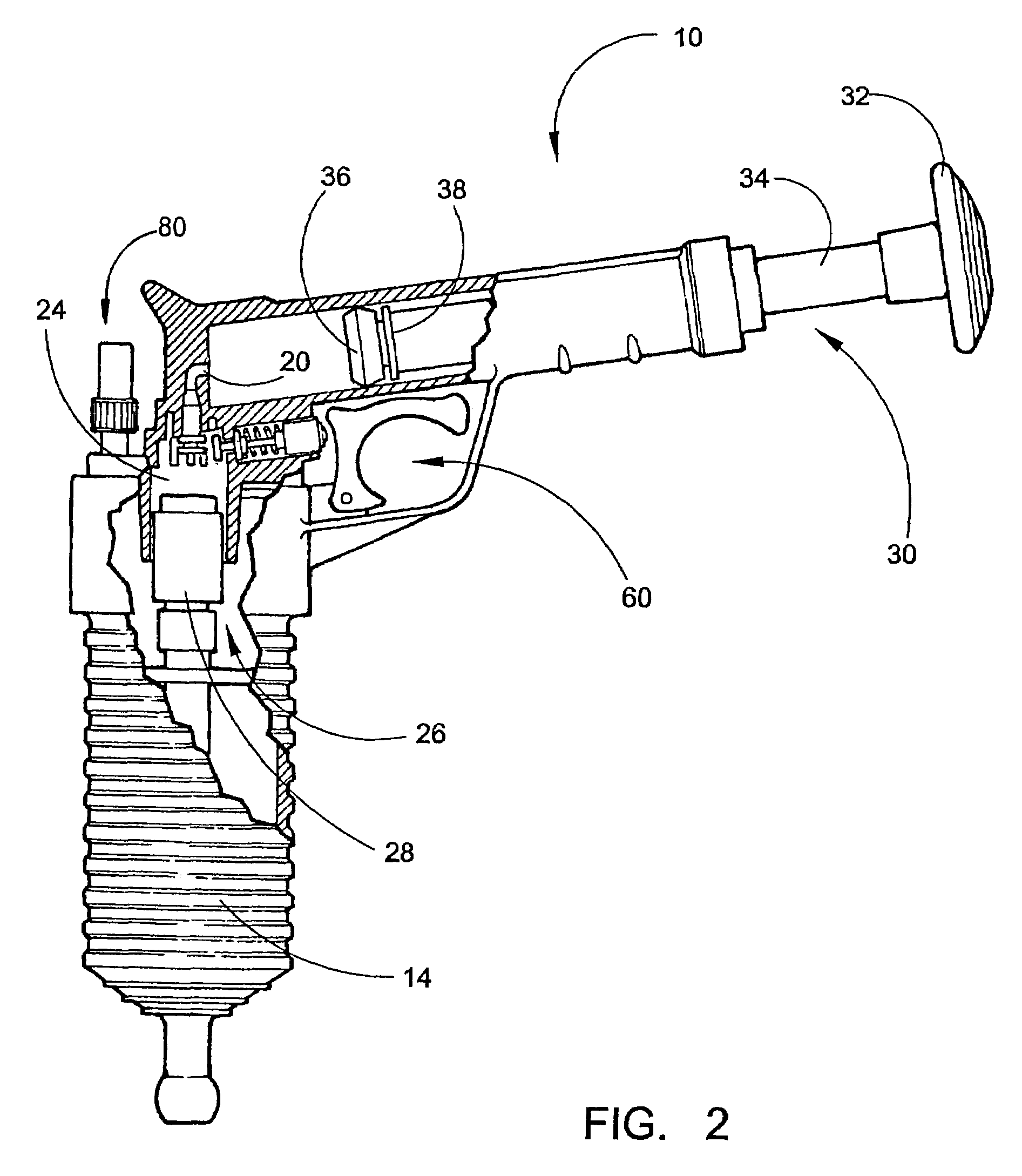Self-contained handheld drain clearing compressed air device
a compressed air device and self-contained technology, applied in the direction of water installations, suction cleaners, construction, etc., can solve the problems of affecting millions of households per year, septic and or putrid water build-up in and around the house, harmful to the environment, etc., to achieve convenient storage, quick and efficient unblocking, and convenient use
- Summary
- Abstract
- Description
- Claims
- Application Information
AI Technical Summary
Benefits of technology
Problems solved by technology
Method used
Image
Examples
Embodiment Construction
[0045]For a fuller understanding of the nature and advantages of the invention, reference should be had to the following detailed description taken in conjunction with the accompanying drawings wherein similar parts of the invention are identified by like reference numerals.
[0046]Referring now to FIG. 1, there is shown a side elevational view of the preferred embodiment of the drain clearing compressed air device 10. A manual pump 30 is used to force compressed air into compressed air storage chamber 14. A trigger component 60 is used to release compressed air from compressed air storage chamber 14. Drain-sealing adapter fitting 16 allows drain-sealing adapters to be connected to drain clearing compressed air device 10 to enable the clearing of various pipe and drains. A pressure release safety component 50 is included for user safety.
[0047]Referring now to FIG. 2, there is shown a partial cross-sectional view of the drain clearing compressed air device 10. Compressed air is forced ...
PUM
 Login to View More
Login to View More Abstract
Description
Claims
Application Information
 Login to View More
Login to View More - R&D
- Intellectual Property
- Life Sciences
- Materials
- Tech Scout
- Unparalleled Data Quality
- Higher Quality Content
- 60% Fewer Hallucinations
Browse by: Latest US Patents, China's latest patents, Technical Efficacy Thesaurus, Application Domain, Technology Topic, Popular Technical Reports.
© 2025 PatSnap. All rights reserved.Legal|Privacy policy|Modern Slavery Act Transparency Statement|Sitemap|About US| Contact US: help@patsnap.com



